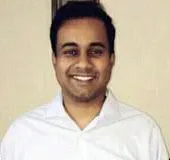
“I still recall that lilting song from the Hindi film ‘Mausam’ — ‘Dil dhoondhata hai phir wohi fursat ke raat din…’ I fell in love with the magical charms of this hill town the moment I arrived here in 1977,” said former President of Afghanistan, Hamid Karzai, when he visited his alma mater, Himachal Pradesh University. Aung San Suu Kyi, Myanmar’s State Counsellor, too, revealed her fond memories as a student at Delhi’s Lady Shri Ram College. “I recall my friends and teachers,they were very caring, they cared about us individually. Caring teachers do more for their students than the curriculum can do,” she said, perceptively highlighting the softer and more important aspects of education.
Hamid Karzai, Aung San Suu Kyi and other leaders who have studied in India speak endearingly about their experiences as students in India. Similarly, many of our students studying abroad in the US or the UK feel attached to their alma mater and develop a bond with the host countries. Along with Hollywood, Rock ‘n’ Roll, the American education system is among its biggest sources of soft power. The home to the best universities in the world, it attracts the brightest minds from across the world. In India, too, we have an inspirational history of Nalanda, Takshashila and Vikramashila that served as the melting pot of scholars from across the world.
The system needs to be reformed to first provide wholesome education for Indian students, before we cater to foreign students in large numbers.
Though we are far from those glory days, Indian education system is on its way to reconstruct itself. The government has embarked on several initiatives aimed at attracting a large cohort of foreign scholars to study in Indian universities, enriching our system through ideas and diversity. However, before these objectives are achieved, the many potholes in our higher education system have to be fixed. The system needs to be reformed to first provide wholesome education for Indian students, before we cater to foreign students in large numbers. As legendary Dr. Badrinath of Sankara Nethralaya reminded us when asked about medical tourism, the first priority of our hospitals should be to cater to Indian patients.
The reform of the higher education system is a long-drawn-out process. The National Education Policy draft lays down a number of action points. The previous government, too, had initiated a number of reforms such as graded autonomy for institutions, Institutes of Eminence, SWAYAM (Study Webs of Active-Learning for Young Aspiring Minds) etc. with the hope of liberalising the sector and injecting vitality into the system. The “Study in India” programme was started to provide thrust to the efforts of making India an important Higher Education destination.
The ‘Study in India’ programme has an ambition of increasing it to two lakh by 2022. From 2009-2016 it grew at a rate of 12 percent per annum, very similar to China.
India is home to around 70,000 foreign students. The ‘Study in India’ programme has an ambition of increasing it to two lakh by 2022. From 2009-2016 it grew at a rate of 12 percent per annum, very similar to China. Of the total number of foreign students in India, 63 percent are comprised of students from 10 countries, with Nepal and Afghanistan at 21 percent and 10 percent respectively. Students from Africa, Sudan and Nigeria contribute five percent each to the total. There are over 900 universities and 40,000 colleges in India. While as a destination India ranks 26th in the world for foreign students, as a source, it ranks second. There are about 7.5 lakh Indian students that study abroad.
There are several factors that favour India’s efforts to attract foreign students:
- With increased access to information, Indians and foreigners are more comfortable than before in the knowledge of each other.
- The Indian economy is doing well and has progressed to become the fifth-largest in the world. The image of the third-world poor country is being shed slowly.
- India has developed the image of being home to successful tech companies. Bengaluru has become synonymous with startups. It is stirring quite a lot interest among the globally mobile youngsters.
- Our top institutions, especially the IITs, are world class and feature in the top-200 of world rankings.
- Indian origin CEOs such as Sundar Pichai and Satya Nadella, have bolstered the image of Indian scholars.
- Top-200 of the Fortune 500 companies recruit from Indian universities in large numbers.
- Experiences in emerging markets are placed at a premium in developed countries that want to establish a business presence here.
- India offers a rich milieu of culture and arts for the students to engage with.
- Popularity of English as a spoken language places India at an advantage vis-a-vis China.
- The cost of higher education is relatively cheap in India, offering an interesting place in the cost-value matrix.
Indian higher educational institutions are waking up to the opportunities of having an internationally diverse student body. Many universities are offering fee waivers and scholarships to attract foreign students to boost their image and rankings. Foreign collaboration has become an important component of international ratings. For instance, in the QS world rankings, 10 percent weightage is offered cumulatively to the proportion of foreign faculty and students. Only three Indian institutions find place in the top-200 of the QS World ratings – IIT Bombay at 162, IISc Bengaluru at 170 and IIT Delhi at 172. Even these and other top institutions are actively looking for foreign students to further boost their ranking.
Indian higher educational institutions are waking up to the opportunities of having an internationally diverse student body.
India became a signatory of the Washington Accord in 2014. The National Board of Accreditation (NBA) is the accrediting body for India. It empowers any student graduating from a programme accredited by the NBA to be eligible to practice as an engineer in her domain in any of the other signatory countries of the accord. IT engineers, though, are exempted from the accord. There are certain teething issues that will have to be addressed. Last year, thousands of Indian engineers, including IITians, were staring at job losses after Kuwait decided to recognise only NBA-approved degrees. The HRD Ministry had to send a list of premiere engineering institutes to Kuwaiti authorities to tackle the issue.
The process of making visa procedures simpler, sprucing up facilities in host institutions, marketing Indian universities in target countries, target-marketing student groups through social media, signing international agreements with institutions and universities abroad are some the activities mandated under the ‘Study in India’ programme.
The previous government also initiated the GIAN (Global Initiative for Academic Networks) programme to invite distinguished academicians, entrepreneurs, scientists, and experts from premier institutions from across the world, to teach in the higher educational institutions in India. Till 2018, 700 professors from 58 countries had conducted more than 1,000 courses in their chosen topic.
The SPARC (Scheme for Promotion of Academic and Research Collaboration) programme was initiated to facilitate research and academic collaboration with top academic institutions in the world. The Government plans to fund collaboration of top Indian institutions with foreign institutions figuring in the top-500 of the QS world ranking.
One of the most critical action point for Modi 2.0 is to expand exponentially. Allowing Indian MOOCs (Massive Open Online Courses) to be used in neighbouring countries will strengthen our soft power.
India has the second-largest enrolment in MOOCs (Massive Open Online Courses) after the US. SWAYAM was started by MHRD and has now more than one crore subscribers. One of the most critical action points for Modi 2.0 is to expand exponentially. Allowing Indian MOOCs to be used in neighbouring countries will strengthen our soft power. Some of our previous Distance Learning programmes were popular in Sri Lanka and Nepal, among other countries.
But allowing foreign universities to set up campuses in India is still a pipe dream. The arduous regulations, which mandate foreign institutions to incorporate in India as a Section 8 company or a non-profit, deny the possibility of repatriating profits and makes it a non-starter. But collaboration with Indian universities and the start of research centres are happening. Almost all top institutions are engaged in some form of foreign collaboration.
The ‘Institutes of Eminence’ was conceptualised with a goal of making a few prestigious Indian Higher Education Institutions rank within the top 100 in globally-renowned rankings. They were to be regulated differently from other deemed-to-be-universities, by offering a great deal of autonomy so as to evolve into world-class institutions in a reasonable time period. This could prevent the “brain-drain” of bright students that are lured by best-in-class facilities, teachers and scholarships that foreign universities offer. The hope is that they will also blossom into the Harvards and Stanfords of the world, becoming global hubs of high-end research and innovation.
Indian music, cuisines, movies, spirituality, craft and tourism are already sources of attraction for the rest of the world. Education can be an important source of soft power as well. But the pursuit of soft power follows the Heisenberg uncertainty principle. If it is pursued with the intent of power, the results usually elude. Just like yoga, the value proposition and authenticity of our offering should stand out. India has to pursue with the intent of openness, diversity and curiosity to learn. The rest will just follow.
The views expressed above belong to the author(s). ORF research and analyses now available on Telegram! Click here to access our curated content — blogs, longforms and interviews.




 PREV
PREV


